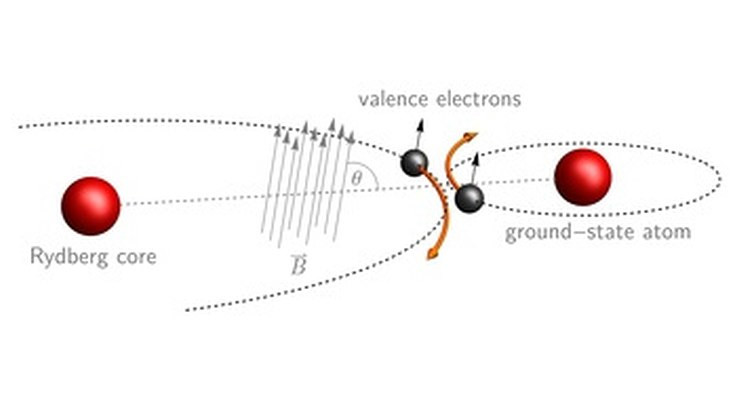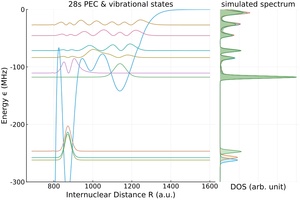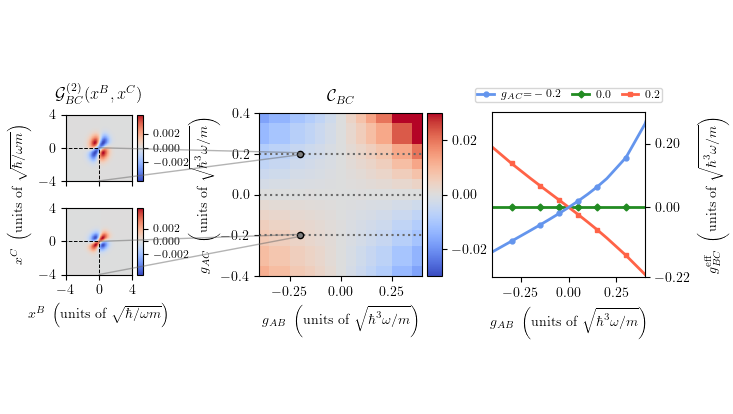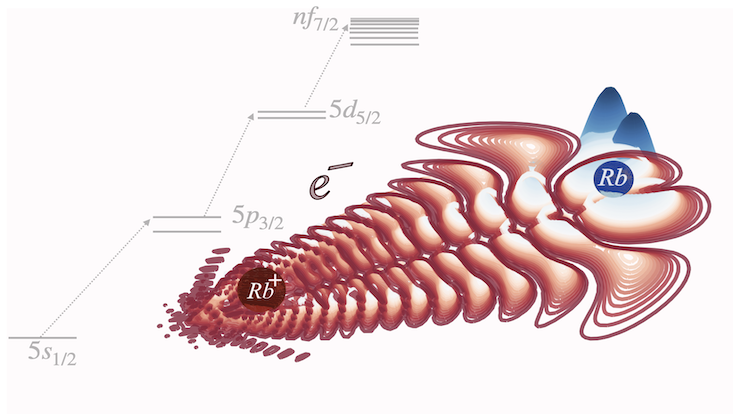Quantum Physics
Long-range Rydberg molecules align in magnetic fields even when their electronic orbital is spherically symmetric
1 February 2019

Photo: AG Schmelcher
A long-range Rydberg molecule (LRM) forms when a neutral ground-state atom enters the electronic orbital of a Rydberg atom, where the attractive scattering process between the Rydberg electron and the neutral atom establishes a molecular bond.
Due to the extend of the Rydberg electronic orbital, the bond lengths of LRM are typically huge, exceeding thousands of Bohr radii, which leads to large permanent electric dipole moments. The potential energy curves (PEC) reflect the spatial variations of the density of the Rydberg electronic wave function and are thus highly oscillatory (compare Fig. 1).
In this work, we investigate a mechanism to identify the presence of spin-orbit coupling in the spin-dependent scattering of the Rydberg electron and the ground-state atom. The two valence electrons of the two participating atoms form a singlet/triplet spin-pair with total spin S=0 or S=1. This spin interacts with the electrons' relative orbital angular momentum around the ground state-atom L, which can be nonzero even when both atoms are initially prepared in electronic s-states. At certain molecular bond lengths p-wave scattering (L=1) plays a significant role which leads to a splitting of the PEC into three curves dominated by one of the three J-dependent scattering channels, where J is the total angular momentum |S-L|≦J≦|S+L| leading to three distinguishable molecular peaks in the corresponding spectrum (compare Fig. 1). Additionally, when a weak magnetic field (on the order of several Gauss) is applied, these curves mix depending on the relative angle of the internuclear axis and the magnetic field (see an illustration of this in Fig. 2). This can lead to alignment of the molecule despite the fact that the atom's individual electronic orbitals are isotropic and not influenced by the magnet field.
Since this effect is very sensitive on the presence of strong p-wave interactions, it opens up the possibility to experimentally investigate the nature of electron-atom p-wave scattering including the zero-energy limit of the scattering length and the exact position of p-wave resonances.



